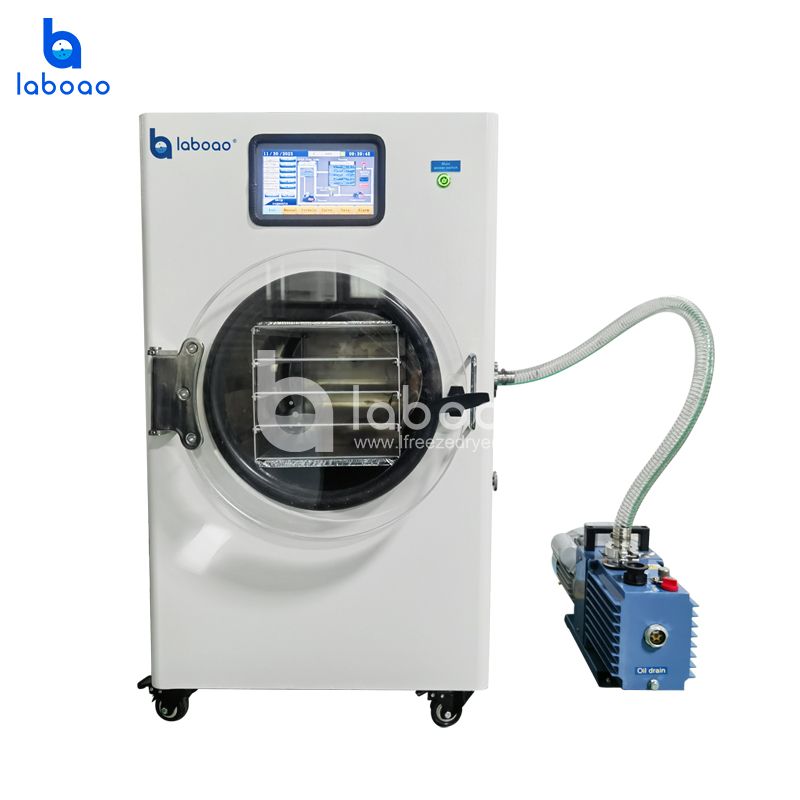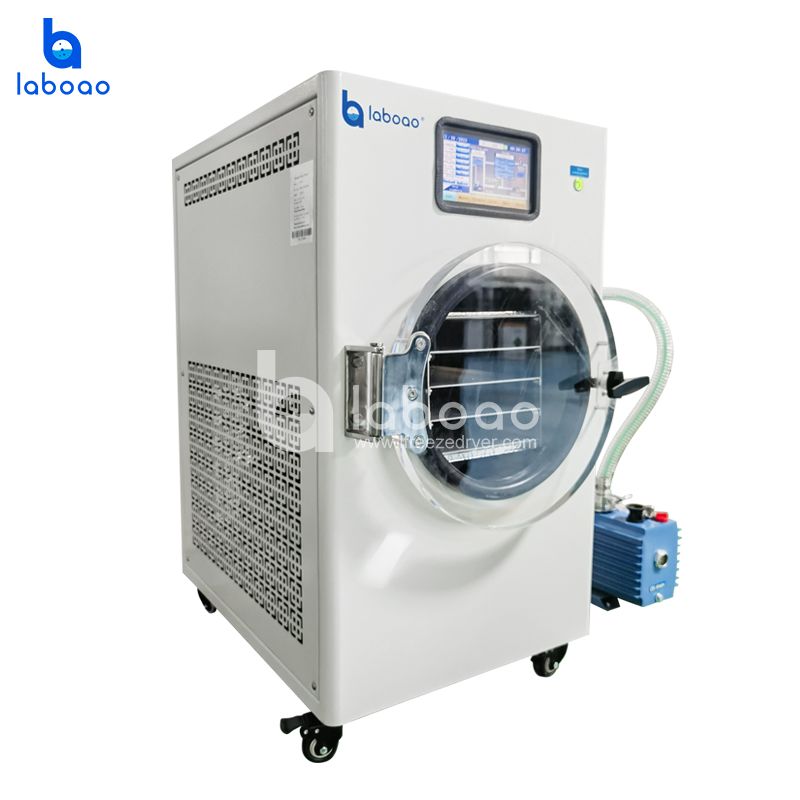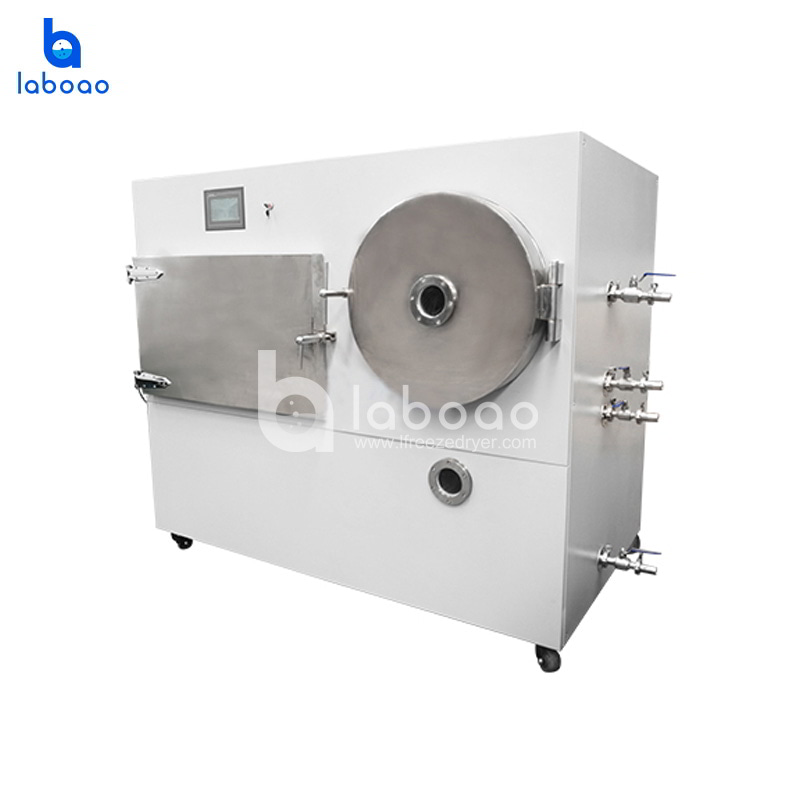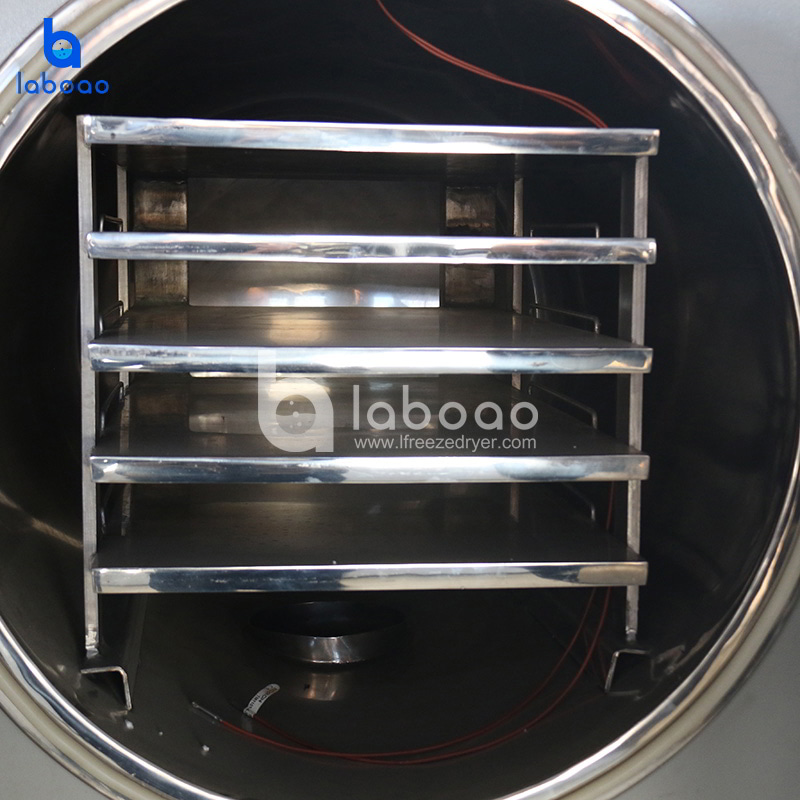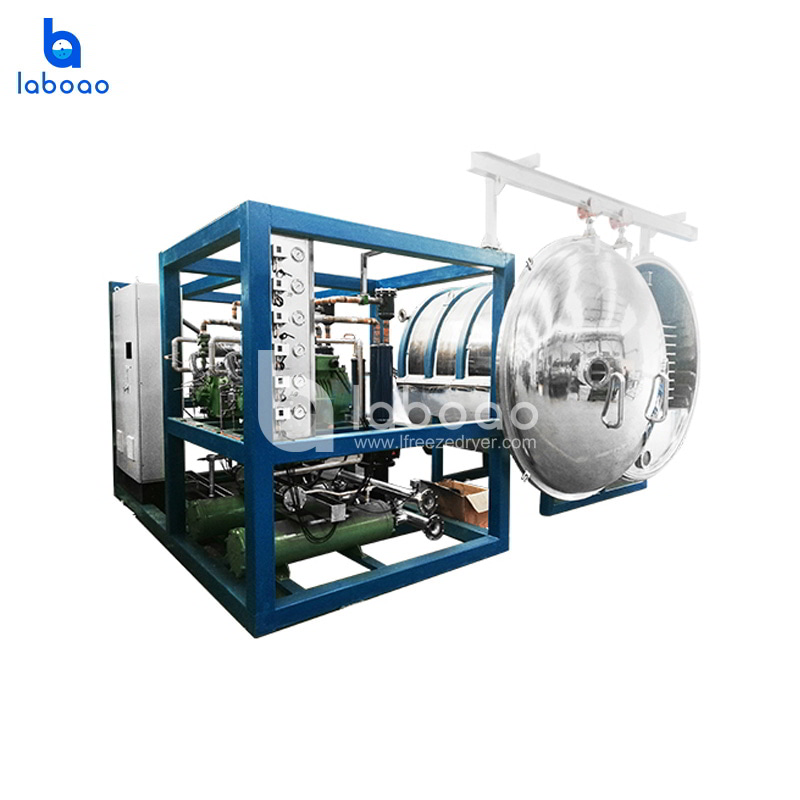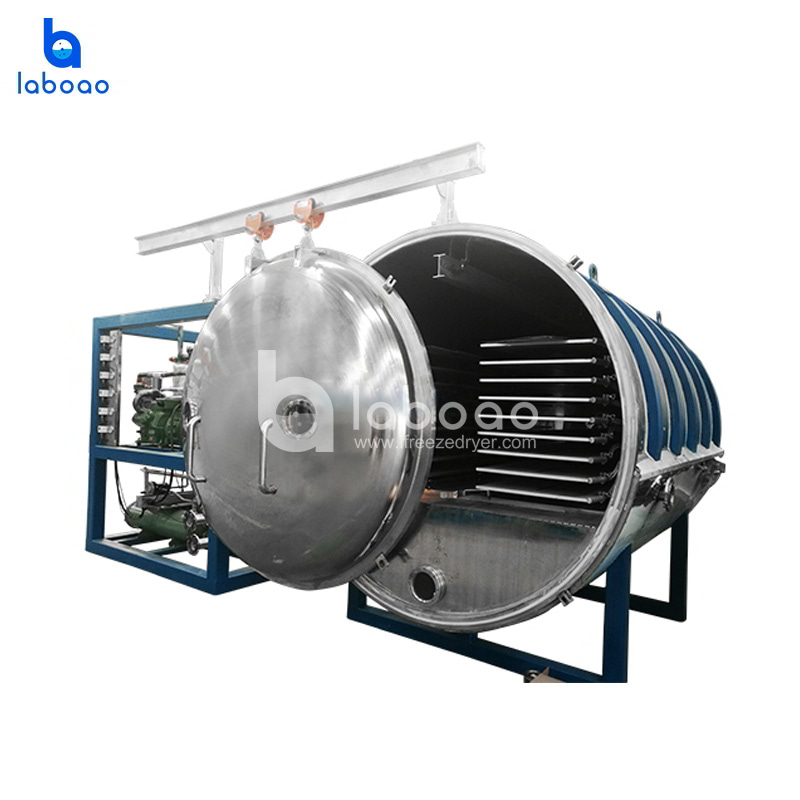
1. Freeze-drying of Chemical Drugs
For freeze-drying of chemical drugs, the eutectic point of the solution is crucial and serves as the primary basis for developing the freeze-drying process. During pre-freezing, the product must be frozen to a temperature below the eutectic point; during sublimation, the temperature must not exceed the eutectic point. Therefore, the eutectic point is the maximum permissible temperature for both the pre-freezing and primary sublimation stages. Another important factor is the concentration of the solution, which affects the freeze-drying time and product quality. Excessively high or low concentrations are detrimental to freeze-drying. Therefore, the concentration of the freeze-dried product should generally be controlled between 4% and 25%. Since most pharmaceuticals require a low residual moisture content, to ensure this, the condenser's temperature limit must be kept to a certain temperature, such as -60°C or below.
The freeze-drying process should be carried out according to the product's freeze-drying process profile. If product quantity and freeze-dryer status do not fluctuate significantly, the data for each critical control point should closely match the freeze-drying process profile. During production, closely monitor changes in shelf temperature, product temperature, condenser temperature, vacuum level, and other parameters to ensure compliance with relevant requirements. Under strict control of the above key process flows, a freeze-dried chemical drug injection with excellent appearance and key quality attributes can be expected.
2. Freeze-drying of vaccine injections
Vaccines are biological products prepared using biotechnology using pathogenic microorganisms or their components or metabolites as starting materials and used to prevent and treat corresponding human diseases. After vaccination, vaccines can stimulate the immune system to produce specific humoral immunity and/or cellular immune responses, enabling the human body to gain immunity to the corresponding pathogenic microorganisms. According to their components and production processes, they can be divided into the following types:
(1) Inactivated vaccines
(2) Live attenuated vaccines
(3) Subunit vaccines
(4) Genetically engineered recombinant protein vaccines
(5) Other vaccines
According to the material properties related to the freeze-drying process, vaccines belong to both the fermentation-based drug category and the macromolecular drug category. The previous section described the characteristics of the freeze-drying process for chemical drugs. For vaccine products, all the freeze-drying research ideas for chemical drugs are applicable, but for vaccine products, the main characteristics are as follows:
(1) Batch instability
Vaccines are composed of components with immune activity. The various materials used in the production process have different sources and types. The production process is complex and easily affected by multiple factors. The crude product needs to be obtained through fermentation. Therefore, the robustness of the components between batches is very poor.
For the freeze-drying process, the batch consistency of the input material solution is the focus of attention. Since the eutectic point of the freeze-dried product has a great influence on the freeze-drying process, the stability of the eutectic point between vaccine batches is the focus of investigation. After analyzing specific cases, it is found that batch differences in eutectic point exist, which is the reason for the differences in appearance, activity, impurities, etc. between batches.
During the production process, it is necessary to control the quality of each process link and each material used in the production process, and formulate quality control standards that can be used for production; formulate quality requirements for each intermediate product in the process that can enter the subsequent processing process and formulate deviation control and handling procedures for the production process.
(2) Characteristics of adjuvants
Adjuvants are non-specific immunopotentiators. When they are injected together with antigens or pre-injected into the body, they can enhance the body's immune response to antigens or change the type of immune response. Adjuvants generally work by increasing the retention time of antigens in the body, enhancing the body's ability to process and present antigens, or stimulating lymphocyte proliferation and differentiation. The activity of adjuvants is affected by many factors. When the same adjuvant is used in combination with different antigens, completely different immune responses may be obtained.
There are many types of adjuvants, such as aluminum hydroxide adjuvant, Corynebacterium brevis, lipopolysaccharide, cytokines, alum, etc. Adjuvants can change the eutectic point characteristics of vaccine injections. Statistics show that the eutectic points of vaccine products are mainly concentrated in the two ranges of -20℃~-30℃ and -30℃~-40℃.
3. Lyophilization of Traditional Chinese Medicine Extracts
Traditional Chinese medicine preparations are made by processing or extracting traditional Chinese medicine into a specific formulation that can be used directly for the prevention and treatment of diseases.
For traditional Chinese medicine injections, the most common form is the active ingredient of a specific traditional Chinese medicine. Lyophilized powders with complex compositions are generally not available. This is because direct injection requires very strict quality control of the drug, especially for impurities, which are particularly difficult to control, and it is often impossible to clearly identify the composition of all impurities.
Therefore, the freeze-drying of traditional Chinese medicines can follow the basic principles of freeze-drying for conventional chemical drugs, and its characteristics are similar to those of conventional chemical drugs.
